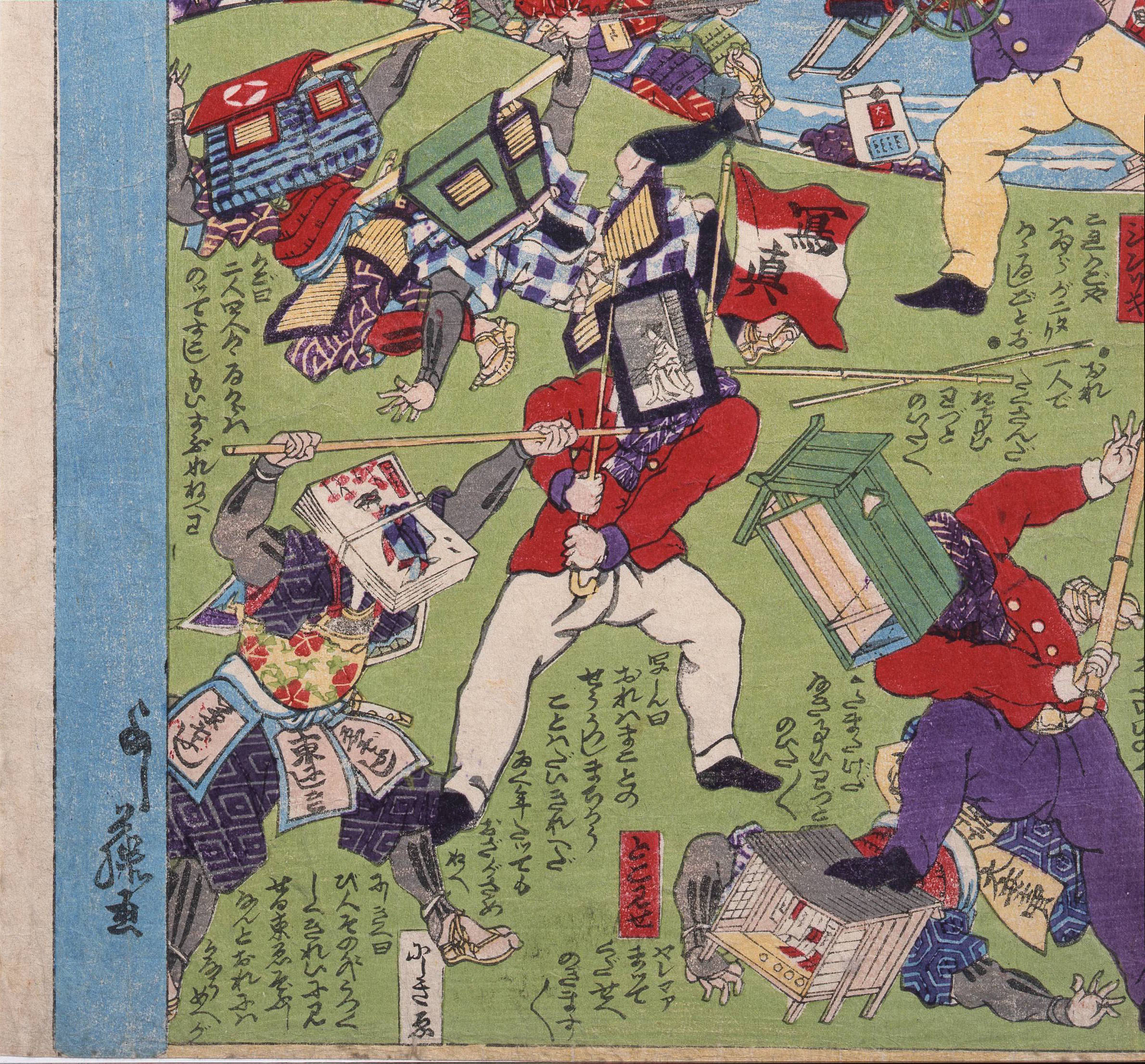The idea for the smart, complex and challenging exhibition "From Ukiyo-e to Photography" at the Edo-Tokyo Museum started from the discovery of two images. One is a photograph of the Meiji-Era (1867-1912) Minister of Home Affairs Toshimichi Okubo, taken in Paris in 1878. The second is a color ukiyo-e print of Okubo, made in 1878 by the woodblock artist Kiyochika Kobayashi, which is clearly based on the earlier photographic portrait.
From this relatively straightforward use of a photograph as source material, a year of research and preparation has gone into organizing a remarkably varied presentation of creative innovation and genre-bending. There are photo-realistic woodblock prints and paintings and, conversely, photographs that have been colored to look like handmade art. You can also see ukiyo-e of Japanese beauties holding photographs, and rather eerie souvenir portraits that feature the head of a Caucasian client, copied from a photograph and grafted onto a pre-painted kimono with Mount Fuji in the background. Welcome to "Ye Olde Photo Shoppe," version 1880.
Of course these visual mash-ups are highly symbolic: The imported technology of industrialized Europe and the U.S., with its scientific gaze has, literally, been superimposed on, or inserted into, the pre-modern world of Japan and its aesthetic traditions. A satirical 1882 ukiyo-e print by Yoshifuji Utagawa, "Enlightenment and the Destruction of the Old Ways Compared," features in the exhibition as an indication of the times. Various anthropomorphized objects can be seen squaring off with each other; a rickshaw beats a palanquin with a stick and a kerosene lamp battles an old-fashioned ceramic oil lamp. In the corner, ukiyo-e can be seen fighting off photography. The insight of this exhibition, however, is that it reveals the liaison and continuity between the two.



















With your current subscription plan you can comment on stories. However, before writing your first comment, please create a display name in the Profile section of your subscriber account page.